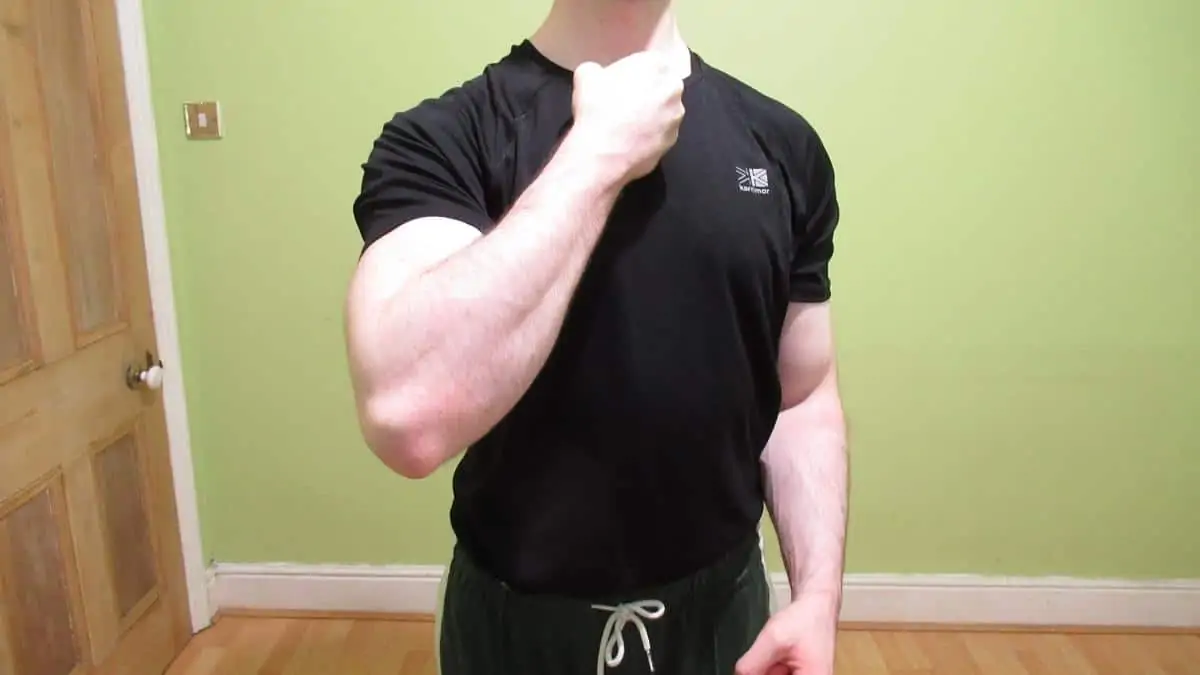Welcome to the definitive guide for learning how to get bigger forearms naturally, safely, and faster than you think. The forearm consists of a small group of muscles generally used for gripping and lifting everyday objects. However, when developed to their true potential, which can vary based on your genetics, the lower arms are a sight to behold.
So, if you want to discover how to make your forearms bigger, check out the tips below. We also have full workouts and answer many frequently asked questions along the way, including how long it takes to get huge forearms.
Related post: biggest forearms in bodybuilding
How to build forearms that are huge
Finding out how to make your forearm bigger is exciting because once you have the know-how, then only effort and consistency lie between you and that forearm development that you desire. These 6 test-backed tips will give you the special knowledge that you need to get ahead of the pack.
Giant forearms require direct training
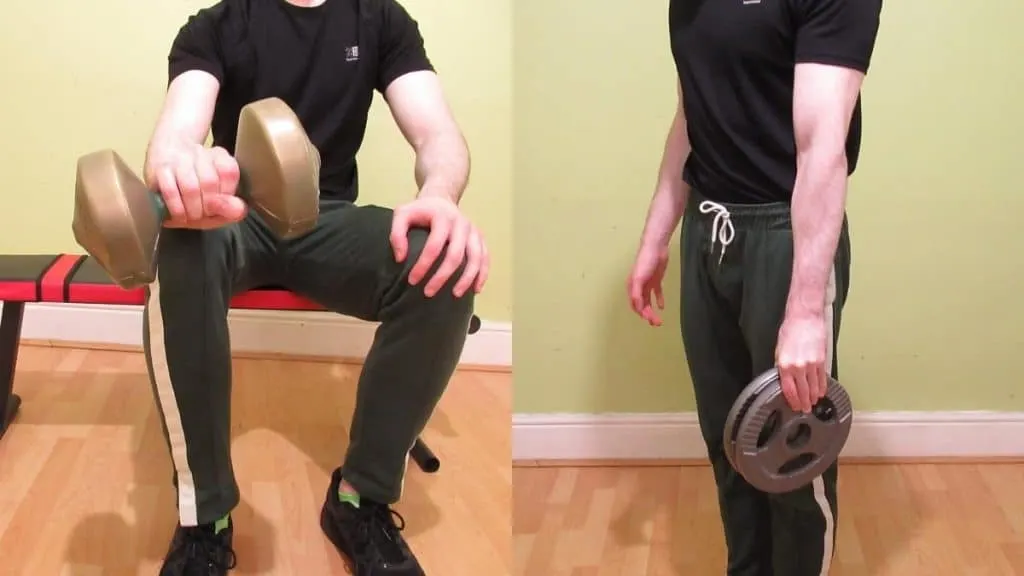
It’s true. When you’re deadlifting ridiculous numbers, you can get massive forearms without direct training. But let’s be honest, who’s pulling 800lbs for reps?
Exactly. The average guys like me and you need to perform direct training to achieve impressive forearm development. I classify direct training as any exercise where the lower arms are the first point of failure.
If you have big biceps but small forearms, or if you just have weak forearm muscles in general, then direct training 1-2x per week is the quickest route to building big forearms.
Rest up to build big forearms quicker

To build forearm size that demands attention, you need to rest. This is because muscles only get stimulated in the gym. They don’t actually grow in the gym—they grow during recovery.
But what is “recovery” exactly?
From the perspective of someone who wants to increase forearm size, recovery means consuming enough quality protein and healthy calories to promote lean muscle growth.
A big forearms workout also requires enough sleep so that your muscle tissue can rest and increase in size and strength for your next workout.
Recovery also means avoiding overtraining. If you constantly perform too many sets or train your lower arms too frequently, then you’ll struggle to implement progressive overload and most likely just maintain your current size rather than build new muscle tissue.
Never neglect your grip
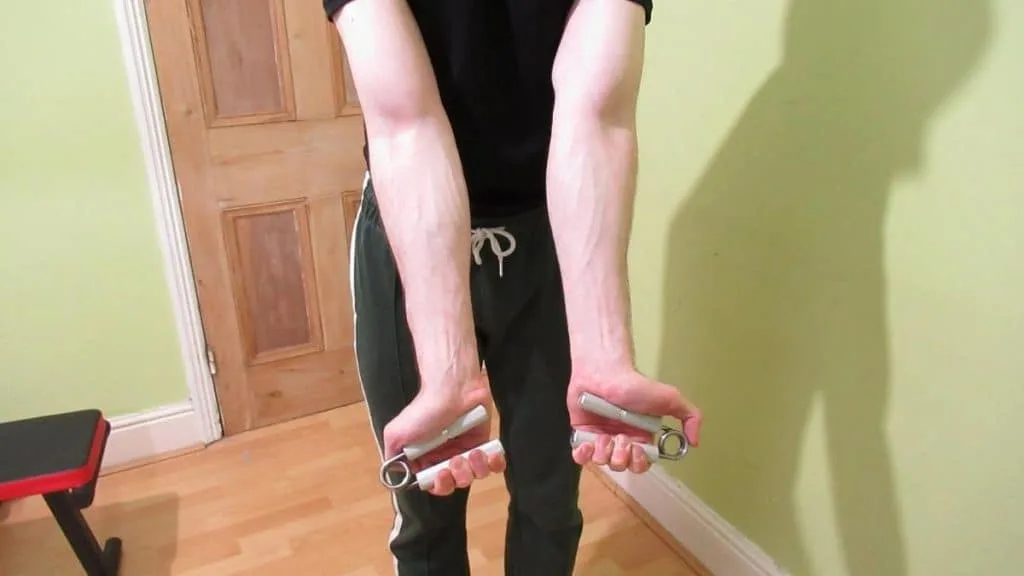
Increasing forearm size has a lot to do with strengthening your grip. After all, anyone with an iron first grip or crushing handshake usually has the buff forearms to match.
Also, despite what bodybuilders may have you believe, the forearms exist for more than just wrist curls. We use our lower arms for gripping and lifting heavy objects. So make sure to include some loaded carries like farmer’s walks in your program if you want truly monster forearms.
Improve your mind-muscle connection for faster forearm growth
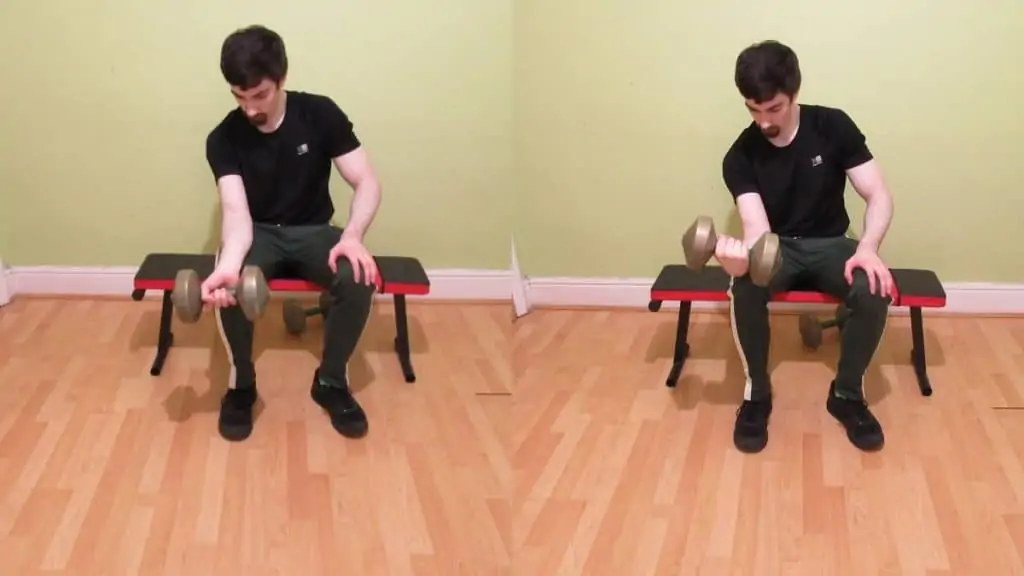
Developing powerful forearms that could rip a telephone book in half usually means learning how to get huge forearms by paying particular attention to your technique. After all, few individuals with toothpick lower arms have the grip strength or dexterity to perform impressive feats of strength with their hands.
Therefore, you need to improve your mind–muscle connection if you’re serious about building forearms that demand attention.
Start by slowing down your reps by a second—temporarily, until you nail the technique—so that you can feel your muscles stretching under the resistance.
Also, be sure to forcefully contract the muscle belly as you complete each repetition. This way, you engorge the muscle with more blood and learn to properly squeeze the target area.
If it helps, mentally think about doing all of this. Exercise scientists call these mind-muscle connections internal cues, and this imagination-focused lifting can really make a difference to your real-life lifting.
Stick with simple exercises for large forearms
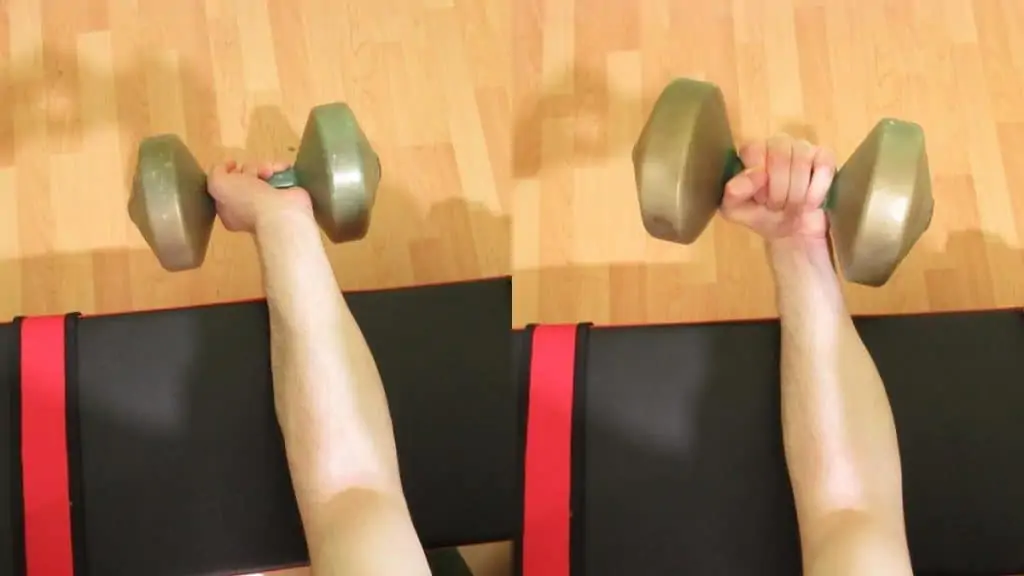
Why are my forearms so skinny? Says the guy who changes his exercise selection every week…
We’ve known for decades now that progressive overload is a crucial training technique for anyone who wants to get bigger forearms, or improve any other muscle group, for that matter.
But if you’re swapping exercises each week, then how can you ever expect to gain strength on them?
Avoid this pitfall. Instead, keep each exercise in your routine for at least 8-12 weeks (longer if you like) so that you can milk the gains.
You might worry about providing a novel stimulus for your muscles, but remember, even adding 2lbs to a lift is a new stimulus for that particular muscle or set of muscles.
Be patient, and the forearm gains will arrive

Implementing the above techniques will result in you getting bigger forearms (relative to your genetic potential) sooner or later. However, you need to employ these training and recovery principles consistently.
Don’t quit if you fail to see any visible results in the first few weeks. Noticeable forearms before and after gains take a while to kick in, and I’d hate to see you stop digging 3 feet from gold, so to speak.
What’s a good routine for building massive forearms?

Check out our forearm workouts mega guide for a selection of routines based on your training goals and current level of advancement. But if you’re in a hurry, then you can also follow the program below to get big forearms.
1: Plate pinch — 3 x 30 second holds
2: Wrist curl (single arm) — 4 x 8-10 reps
3: Reverse wrist curl (single arm) — 4 x 12-15 reps
4: Thumbless-grip reverse bicep curl — 4 x 8-12 reps
5: Farmer’s carry — 4 x 30-45 second holds
Can anyone get huge forearms naturally?
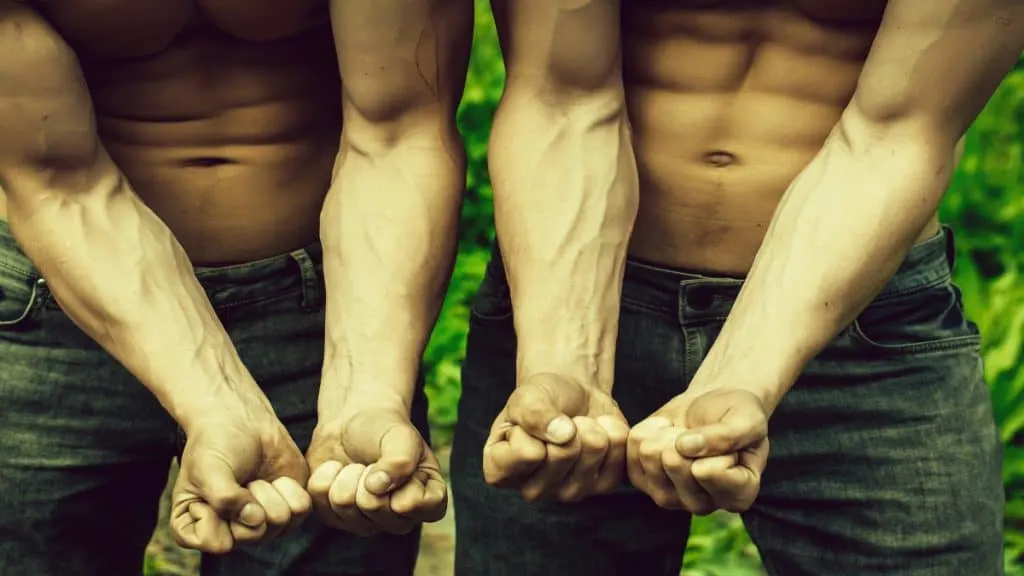
Although anyone can learn how to get bigger forearms and then put their knowledge into practice, not everyone is cut out to have extremely big forearms.
But as I showed in the above guide, you can still aim for those Popeye forearms by training hard and recovering optimally. The reality is that unless you’re already close to your genetic potential (which is determined on a muscle by muscle basis), you can most likely gain some significant forearm size.
Remember that muscle growth is relative. For many people, adding an inch to their forearms can lead to eye–popping development. This is especially true for the arms because they tend to hold very little body fat in men compared to other areas.
How long does it take to build big forearms?
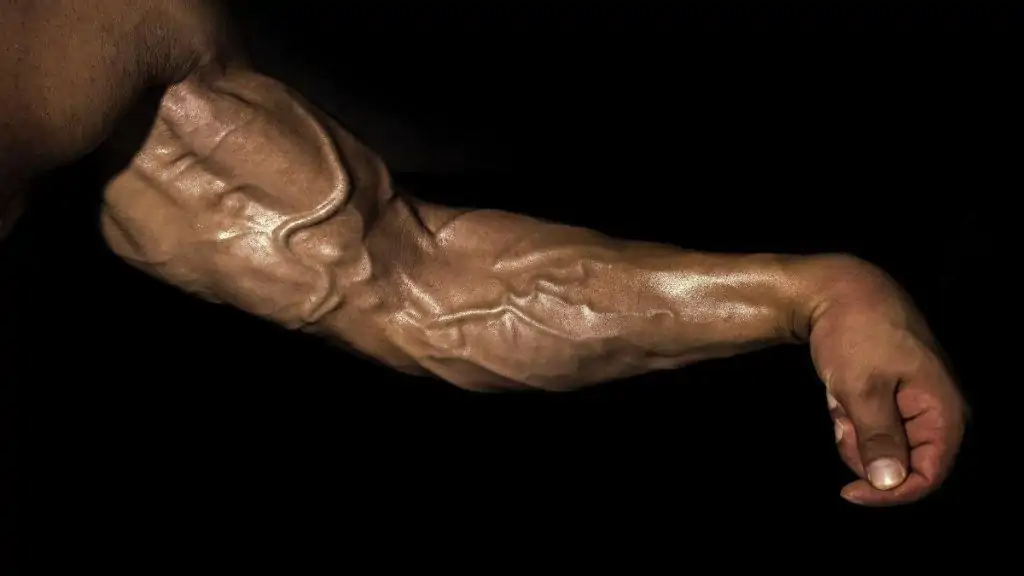
As a general rule of thumb, the less muscle mass that you currently have, the faster you’ll see forearm growth. This is because you still have more muscle left to gain compared to someone who’s closing in on their natural genetic limitations.
If you’re a complete novice who’s never worked their forearms before, then you can see almost weekly progress because the training stimulus is so novel for your body that your muscles simply have to grow to cope with what they perceived as a challenging workload.
Why do thick forearms look so impressive?
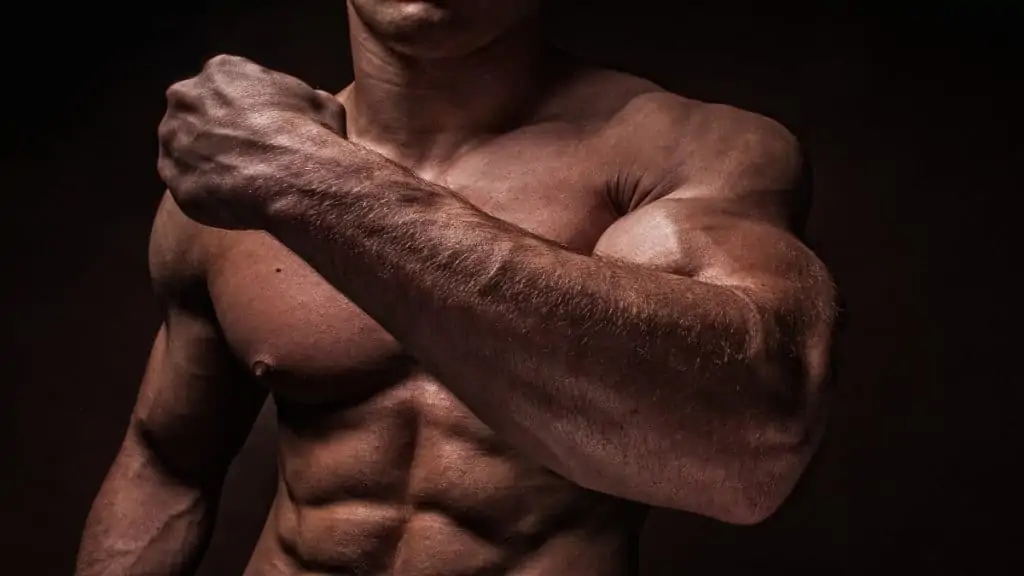
Let’s be honest, when you’re learning how to increase forearm size, it’s because you want thick forearms. You know, those slabs of meat that look like they should be hung up in a butcher’s shop. But does this level of muscularity look impressive? And do girls like forearms?
The answer to both those questions, based on the collective experience of the lifting population, is a resounding yes.
As one of the most visible body parts of the human body, the lower arms really pop when well-developed. While your other muscles are generally hidden underneath your clothing, your forearms are often permanently on display.
Plus, in a world where everyone obsesses over their chest and biceps, you’ll quickly build a physique that stands out by focusing on your forearms. After all, in the old days, it might not have been uncommon to have forearms larger than your biceps because they were used in manual labor and heavy lifting.
How can you get ripped forearms?
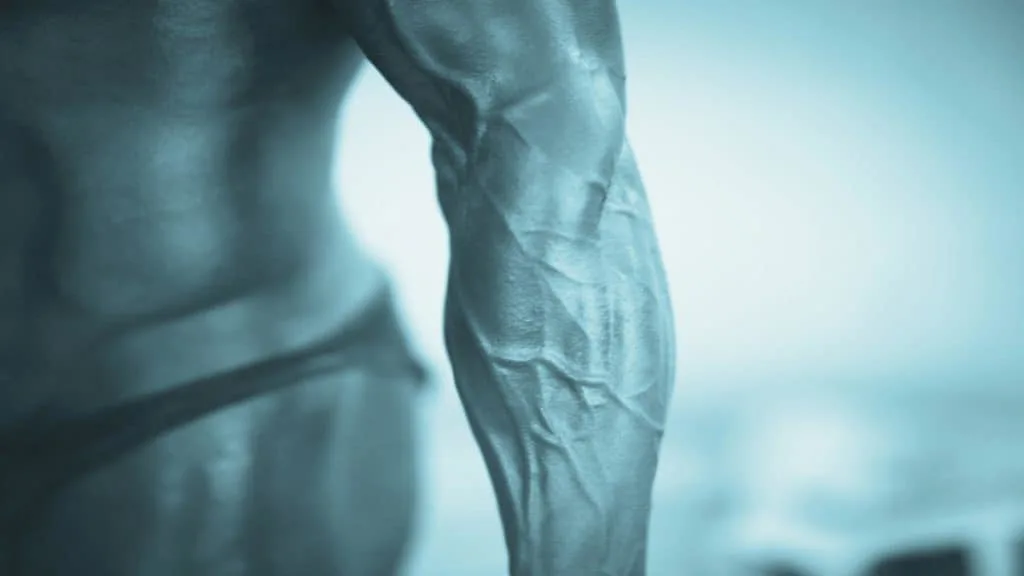
You can read our guide on how to get forearm veins, but in short, achieving ripped forearms comes down to two factors: your genetics and your body fat level.
While anyone can reduce their body fat level through exercise and diet, not everyone has the genetics for eye-popping vascularity. It might be the case that you can actually build massive forearms but simply don’t have the genes to make your forearms look freaky.
Performing BFR training for forearms will give virtually anyone a temporary boost in vascularity. And in many cases, this high-rep training style can permanently improve the look of your lower arms because it produces a pump that’s unlike any you get from other training techniques.
The good news is that compared to the stomach, chest, and back, men tend to store less body fat on their arms, meaning that their lower arms naturally retain a leaner appearance even when their body fat may be increasing elsewhere.
Where can I learn more about how to increase forearm size in natural lifters?
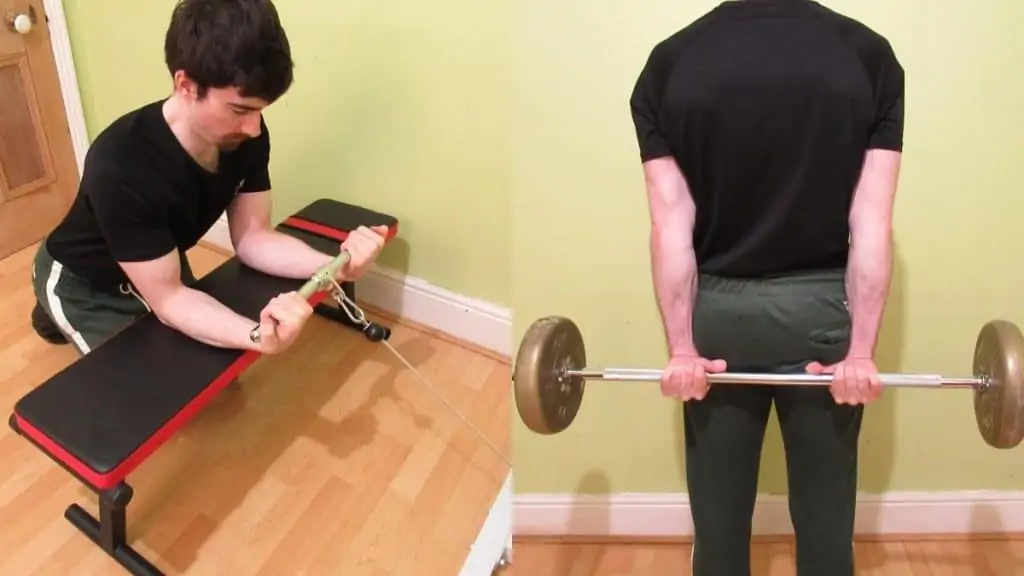
Obviously, I’m a bit biased, but we have tons of guides that will teach you how to make your forearm bigger with completely natural methods.
For starters, we have an article on how to measure your forearm so that you can assess your starting point and genetic potential. From there, you can learn how to get bigger forearms and wrists or check out our complete guide to forearm hypertrophy for some practical tips on increasing forearm size.
Of course, there are many other useful resources on the web that you can check out. Visit PubMed to see the results of training studies on forearm size. [1]
See this link for another interesting journal article on the size of the lower arms. [2]
A quick summary on building forearm size

As you can see, learning how to get bigger forearms is relatively easy. The hard part is putting in the work to get the gains that you desire. This takes dedication over a number of weeks, months, and years.
Whatever you, don’t fall into the trap of looking for new training techniques that promise to speed up the forearm building progress. While these protocols might provide an initial boost during the early phases of your training due to the novelty effect, these benefits will quickly wear off once your body adapts to the stimulus.
Instead, focus on adding resistance to a staple of exercises. It’s far more important to add a small amount of weight infrequently than it is to change up your routine every other week. [3]
So if you want big forearms, eat enough quality protein and healthy calories to support your rigorous training. Get enough rest to promote proper recovery. And don’t do too much direct training. Like many things in fitness, less is more when it comes to getting huge forearms.
References
- Abe, T., & Loenneke, J. P. (2015). Handgrip strength dominance is associated with difference in forearm muscle size. Journal of Physical Therapy Science, 27(7), 2147–2149. https://doi.org/10.1589/jpts.27.2147
- Anakwe, R. E., Huntley, J. S., & Mceachan, J. E. (2007). Grip Strength and Forearm Circumference in a Healthy Population. Journal of Hand Surgery (European Volume), 32(2), 203–209. https://doi.org/10.1016/j.jhsb.2006.11.003
- Lorenz, D. S., Reiman, M. P., & Walker, J. C. (2010). Periodization. Sports Health: A Multidisciplinary Approach, 2(6), 509–518. https://doi.org/10.1177/1941738110375910

